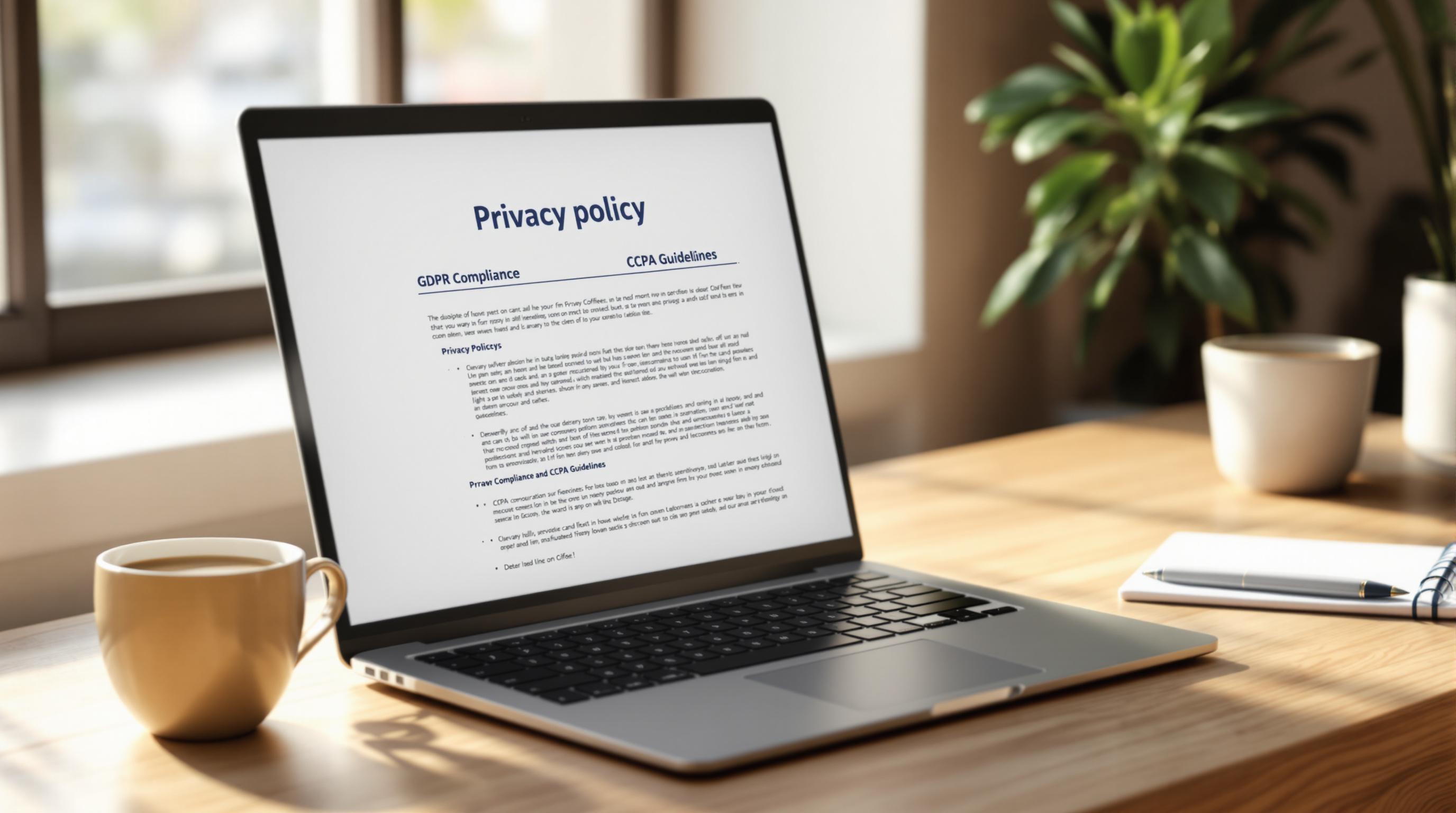If your business sends marketing emails, GDPR compliance is essential to protect user data and avoid fines of up to €20 million or 4% of your global revenue. Here’s a quick overview of what GDPR means for email marketing:
- Consent: You need explicit, clear permission - no pre-ticked boxes or implied consent.
- Transparency: Clearly explain how you’ll use personal data.
- Data Rights: Respect opt-outs and user rights to access or delete their data.
- Record Keeping: Document consent and data processing activities.
Key Steps to Stay Compliant:
- Get Explicit Consent: Use clear forms and avoid vague language.
- Use Double Opt-In: Confirm subscriptions with a follow-up email.
- Update Privacy Policies: Clearly outline data usage and retention.
- Manage Email Lists: Regularly clean lists, track consent, and honor opt-out requests.
GDPR applies to any business handling EU residents’ data, no matter where it’s based. Following these steps not only ensures compliance but also builds trust with your audience.
Understanding GDPR and Its Impact on Email Marketing
What is GDPR?
The General Data Protection Regulation (GDPR) is the EU's legal framework designed to safeguard personal data. It emphasizes transparency, accountability, data security, and respect for individual rights during data processing activities [1][2].
GDPR's Effect on Email Marketing
GDPR has a far-reaching impact, requiring email marketers worldwide to comply with its rules, no matter where their business operates [2][3]. It reshapes how companies approach email marketing, putting user consent and data protection front and center.
"Consent must be freely given, specific, informed and unambiguous. It must be given by a clear affirmative action, such as ticking a box or signing a form."
Here are some of the key GDPR requirements for email marketing:
| Marketing Activity | GDPR Requirement |
|---|---|
| Contact Collection | Users must actively opt in - no pre-ticked boxes |
| Data Processing | Clearly explain how the data will be used |
| Marketing Communications | Separate consent required for marketing emails |
| Record Keeping | Keep detailed records of when and how consent was obtained |
Transactional emails, like order confirmations, are strictly for their intended purpose and cannot include marketing content unless explicit consent has been given [2][3]. Keeping your email lists up to date is more than a best practice - it’s essential for meeting GDPR's standards of transparency and accountability. This means tracking consent, honoring opt-out requests, and updating contact preferences regularly.
Even businesses outside the EU must follow GDPR rules when dealing with the data of EU citizens. This requires a shift in email marketing strategies to emphasize user consent and clear communication. By doing so, companies can also strengthen trust and credibility with their audience [4][5].
These principles form the basis for creating a GDPR-compliant email marketing strategy, which we’ll dive into next.
Steps for GDPR Email Compliance
If you're looking to align your email marketing with GDPR, here's what you need to do to stay compliant and maintain trust with your audience.
Getting Explicit Consent
You need clear and active consent - no pre-ticked boxes or vague language. Consent forms should explain exactly how the data will be used, include your company details, describe processing methods, outline user rights, and mention any third-party involvement.
Using Double Opt-in
Double opt-in adds an extra layer of verification for email subscriptions. After someone signs up, send a confirmation email right away. Make sure it includes clear instructions, explains what they’re agreeing to, and offers an option to decline.
"Double opt-in is crucial for confirming intentional subscriptions and maintaining proof of consent. It helps prevent accidental sign-ups and ensures that email lists are high quality" [3][4].
Creating a GDPR-Compliant Privacy Policy
Your privacy policy should be easy to understand and readily available. It must clearly outline how data is collected, processed, and stored, the legal basis for doing so, user rights, security measures, and how long the data will be retained.
Once you’ve got your privacy policy sorted, managing your email lists effectively becomes the next priority.
Managing and Updating Email Lists
Keep your email lists compliant by regularly cleaning them, documenting consent, and handling opt-out requests quickly. Remove unsubscribers and use strong security measures to protect user data.
"Email lists should be regularly updated to remove unsubscribers and implement security measures to protect data. This includes providing an easy-to-use opt-out mechanism, such as an unsubscribe link in every marketing email" [6][4].
Using the right tools can make these steps easier and help ensure accuracy.
sbb-itb-8abf799
Tools for Easier GDPR Compliance
Handling GDPR compliance manually can be a hassle, especially for small and medium-sized businesses. Automation tools can save time and reduce mistakes, making it easier to meet GDPR requirements.
Email Extractor Tool - Extract Emails with Ai Automation

The Email Extractor Tool is a great example of how automation can simplify email marketing while staying compliant with GDPR. This AI-powered Chrome extension offers several features tailored for GDPR needs:
| Feature | How It Helps with Compliance |
|---|---|
| AI-powered extraction | Reduces errors in collecting email addresses |
| Export options | Makes it easy to keep records of consent |
| Email automation | Handles double opt-in processes automatically |
To stay GDPR-compliant while using tools like this, businesses should:
- Set up verification processes: Use automated double opt-in systems to ensure explicit consent is documented.
- Keep detailed records: Take advantage of export features to organize consent documentation.
- Regularly update contact lists: Automate tasks like preference updates and list cleaning.
When choosing automation tools, look for options that clearly explain their data handling practices and offer strong documentation features. This not only helps you stay compliant but also makes managing your email marketing more efficient.
Conclusion: GDPR Compliance as a Business Advantage
GDPR compliance goes beyond avoiding fines - it's a way to build trust, strengthen customer connections, and boost brand reputation. By focusing on GDPR requirements, businesses can earn customer confidence, lower risks, and streamline operations, giving them an edge in privacy-focused markets.
The earlier strategies - like obtaining clear consent and keeping email lists updated - do more than ensure compliance. They help create loyal customers and foster long-term relationships. Balancing legal requirements with business goals is key. When integrated thoughtfully, these measures can turn regulatory obligations into growth opportunities.
| Business Advantage | Impact on Operations |
|---|---|
| Increased Customer Trust | Better engagement and stronger customer loyalty |
| Market Differentiation | Gain an edge in privacy-aware markets |
| Lower Risk | Minimize fines and avoid damage to your reputation |
| Improved Efficiency | Simplified data processes and cleaner email lists |
Instead of seeing GDPR compliance as a challenge, think of it as an opportunity. Modern tools and automation make it easier to run targeted, privacy-respecting marketing campaigns that align with strict standards.
Staying compliant with GDPR is an ongoing effort. Businesses that embrace these practices position themselves for long-term success in a world where privacy matters more than ever.



